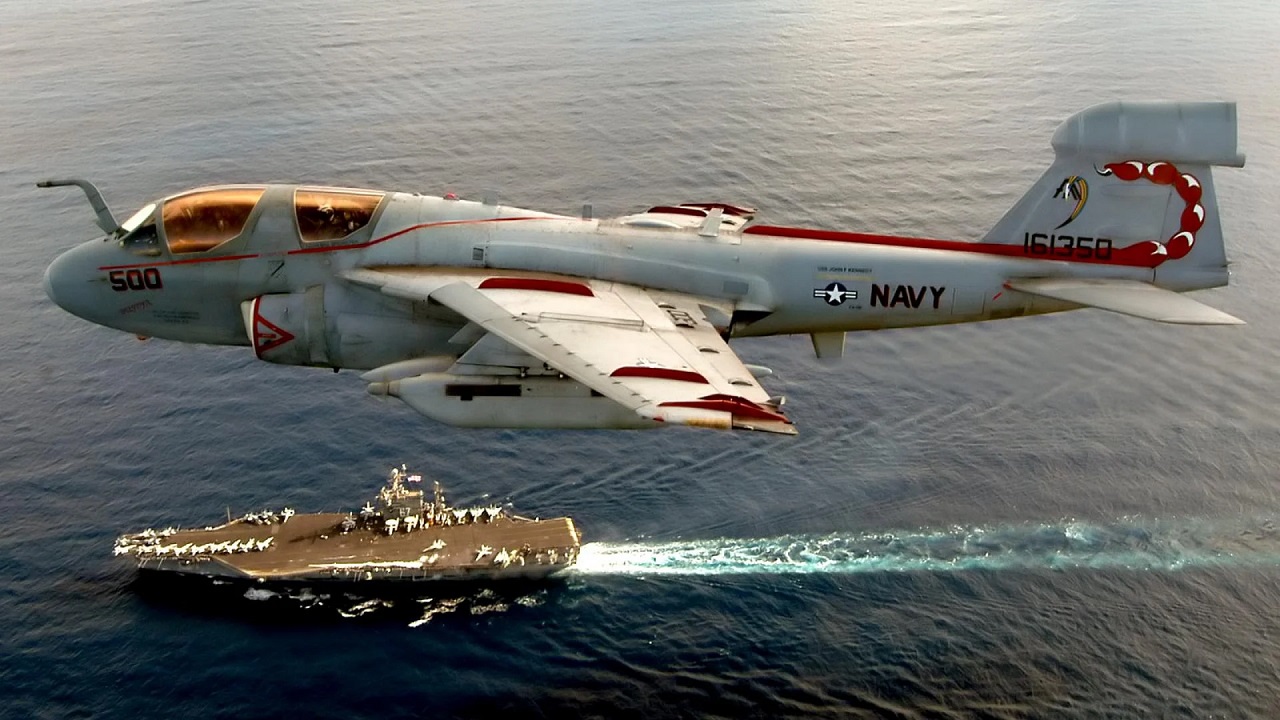As the world’s first ever fully all-weather attack bomber, the A-6 “Intruder” has a revered history in American military aviation.
Although the airframe may not be as widely recognized as its maker’s F-14 Tomcat, the Northrop Grumman attack bomber played a critical role in the carrier air wing’s deep strike capabilities for many years.
How the A-6 Was Born
Following the Navy’s experience in the Korean War, the service saw the need for a more sophisticated long-range strike airframe that could fly at very low altitudes.
The A-6 answered this need and more. With five hard points, the Intruder could handle nine tons of payload- which made the airframe extremely handy in future conflicts. The A-6 was operated by the U.S. Navy and Marine Corps for more than three decades and proved to be an instrumental asset in the Vietnam War. One mission the Intruder participated in during the war would become the quintessential narrative for the formidable attack bomber.
The Story
During the Vietnam War, the Hanoi Rail Ferry on the Red River represented one of the most crucial targets in North Vietnam. While the location had moved from the ‘prohibited’ list and was technically available to attack, it had avoided destruction up until an A-6 attack that would become legendary among aviation buffs. Surface-to-air missiles (SAM) assaulted airframes attempting to attack the ferry site in the past. However, VA-196’s Lieutenant Commander maintained that striking the site was the exact mission the Intruder was designed to carry out.
On Halloween-eve in 1967, two pilots were tasked with the mission to destroy the ferry site. When the A-6 was around 18 miles from the target, the airframe’s PRC-68 radar warning receiver indicated that they were being tracked by a Fan Song SAM radar. The pilots were under the assumption that the SAM would not be able to track the A-6 if it remained below the 1,500-foot altitude threshold. However, when it became clear to the pilots that the SAM was still tracking, the pilots began a high-G barrel roll to throw the missile off.
The pilots, Charlie Hunter and B/N Lieutenant Lyle Bull explained the story in detail in The Aviation Geek Club. “Instantly, the darkness below was lit by the launch of five more SAMs as tracers from multiple AAA positions split the night sky. Hunter finished with a snap roll to upright and dove to 100 feet as he accelerated to 450 knots while jinking wildly and they flew on toward the ferry. Bull saw the radar altimeter read 50 feet three times as they headed in, but he had complete faith in Hunter’s flying ability. At that altitude, the SAMs had no chance of catching them.
Moments later, the target appeared on the radar. Hunter pulled up to 200 feet and Bull salvoed the Snake Eyes when the DIANE showed they were in position. All 13 bombs landed on the ferry, knocking it out. Hunter immediately turned east to avoid Gia Lam Airport, which was just ahead. He jinked as much as possible while he headed for the Tonkin Gulf, with the Intruder followed by AAA tracers and large-caliber aerial explosions. One 85mm round exploded so close it shook the plane, but they were soon out to sea. Hunter executed a normal night recovery aboard Constellation after a memorable 1.9 hours in the air.”
Both Hunter and Bull subsequently earned the Navy Cross for their efforts in destroying the critical site.
Maya Carlin, a Senior Editor for 19FortyFive, is an analyst with the Center for Security Policy and a former Anna Sobol Levy Fellow at IDC Herzliya in Israel. She has by-lines in many publications, including The National Interest, Jerusalem Post, and Times of Israel. You can follow her on Twitter: @MayaCarlin.
From 19FortyFive
The 5 Best .22 LR Semiautomatic Pistols On Earth
Ukraine Footage Shows U.S. M982 ‘Excalibur’ Cut Through Russian Artillery
How To Sink A $3 Billion Dollar Submarine: Leave A Hatch Open

